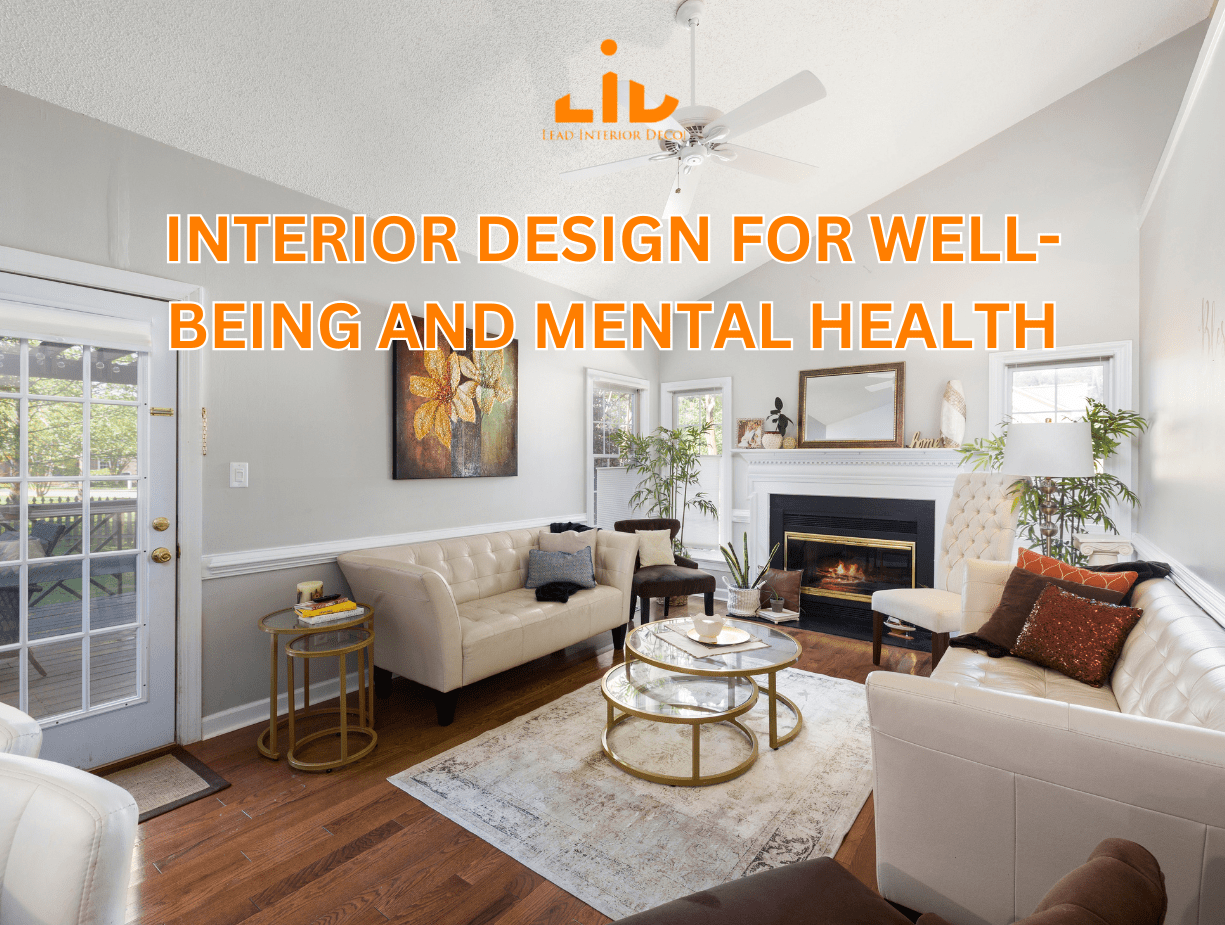Interior design has played an essential role in shaping our living space and the inter-relations of our well-being and mental health. From ancient civilizations to today, the way we design the interior affects our emotions, productivity, and quality of life overwhelmingly. This long story shall try to explain the concept in ways that cater to well-being and mental health through the historical context of interior design, the events surrounding the concept, the important persons, and their influence on interior design with respect to achieving the said psychological and physiological health. Identification of influential individuals who have helped provide insight into interior design, along with a number of perspectives, shall be analyzed in order to provide a reasonably logical analysis.
THE HISTORICAL CONTEXT OF INTERIOR DESIGN FOR WELL-BEING AND MENTAL HEALTH
Interior design has long been intertwined with promoting health and mental well-being across different cultures. In ancient times, the Greeks emphasized the connection between a well-designed interior and physical and mental health, while the Romans focused on creating cool and exhilarating spaces using murals, mosaics, and frescoes. During the Middle Ages, interior design often centered around religious and spiritual themes, leading to the creation of “sacred spaces” that fostered peace, serenity, and spiritual connection. The Renaissance brought new principles and techniques, with figures like Andrea Palladio emphasizing proportion, scale, and light as essential elements for creating spaces that benefit well-being and mental health.
KEY FIGURES IN INTERIOR DESIGN REGARDING WELL-BEING AND MENTAL HEALTH
Florence Nightingale and Elsie de Wolfe were pivotal figures in the evolution of interior design with a focus on well-being and mental health. Nightingale emphasized the importance of clean, well-ventilated, and aesthetically pleasing hospital wards, while de Wolfe pioneered an approach that prioritized comfort, functionality, and beauty in interior design. The Bauhaus movement, founded by Walter Gropius, further influenced interior design theory and practice with its emphasis on integrating art, craft, and technology to create visually engaging, functional, and healthy spaces.
THE IMPACT OF INTERIOR DESIGN ON WELL-BEING AND MENTAL HEALTH
How we design our living space significantly impacts our well-being and mental health. Research has shown that elements such as natural light, ventilation, color, texture, and layout influence our mood and energy levels, contributing to an overall sense of well-being. For instance, features like views and natural light can improve mood and cognitive functioning, while poor ventilation can lead to stress and fatigue. Additionally, color psychology plays a crucial role in interior design, with different colors evoking distinct feelings and responses. Furthermore, the organization of space also affects well-being, as cluttered environments can result in increased stress and anxiety. Therefore, through thoughtful consideration of these factors, designers can create interiors that promote relaxation, focus, creativity, and emotional balance.
INFLUENTIAL PEOPLE IN INTERIOR DESIGN FOR WELLNESS AND MENTAL HEALTH
Several influential personalities have made significant contributions to interior design with a focus on well-being and mental health. Stephen Kellert, a prominent figure in biophilic design, advocates for incorporating natural elements like plants and water into interior spaces to promote well-being and sustainability. Another influential figure, Patricia Moore, has dedicated her career to designing for the aging population, emphasizing the importance of creating environments that support older individuals’ physical, cognitive, and emotional needs for independence and quality of life. Additionally, Roger Ulrich’s research has highlighted the positive impact of natural elements on patients’ well-being and recovery in healthcare environments, leading to the development of design guidelines for healing spaces.
DIVERSE PERSPECTIVES
Interior design plays a crucial role in promoting wellbeing and mental health, with varying perspectives on the subject. Some emphasize the holistic approach, integrating environmental psychology, neuroscience, and sustainability to support human flourishing. Technology, such as virtual reality and artificial intelligence, offers new opportunities to create personalized, supportive environments. However, critics caution against commercializing wellbeing and emphasize the complexity of mental health. Looking ahead, emerging trends, technologies, and challenges will shape the future of interior design, with a focus on sustainability, resiliency, and human-centered design. Integration of biophilic design, wellness architecture, and sensory design will further enhance the connection between individuals and built spaces, promoting a sense of wellbeing and connection.
CONCLUSION
Interior design has been a vital contributor to overall well-being and mental health for centuries. Throughout history and across cultures, design principles have aimed to create harmony and tranquility in our environments. Notable figures such as Elsie de Wolfe, Frank Lloyd Wright, and Dorothy Draper have significantly impacted the industry, leaving a lasting influence on modern design. The relationship between design and human psychology is crucial, as elements such as natural light and soothing color palettes directly affect mood and cognitive function. Looking to the future, creativity, empathy, and collaboration will play essential roles in creating spaces that promote wellness, and for a proper insight in understanding the co-relation between Interior Design for Well-being and Mental Health, please contact us at Lead Interior, as we would assist you navigate through the process.. our contact details are available to your reach.
